Core Boards in the Classroom: 3 Ways to Individualize to Meet Student Needs
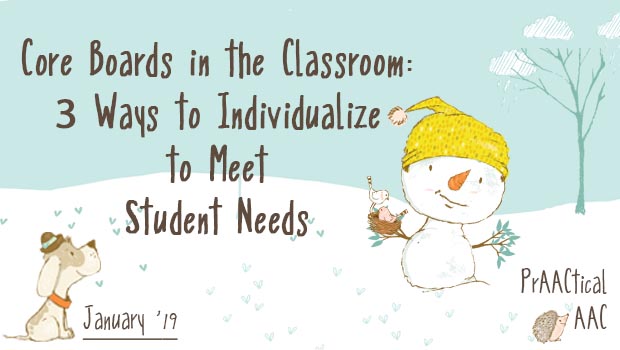
In the US, poster-sized core boards are displayed in a growing number of special education classrooms. In some cases, the displays match the AAC systems that were selected for the students following a comprehensive AAC evaluation. In others, they are more of a compromise measure which are used in order to get communication teaching started while the AAC evaluation process is still in progress. Either way, we eventually want to move from a one-size-fits-all approach to one where there are more individualized communication tools. Here are some of the key areas to consider in that process.
- Vocabulary: While there are many benefits of modeling and eliciting a starter set of core vocabulary throughout the day, there is no denying that specific words are very powerful. What other words (fringe or core), would make a difference in his/her/their learning trajectory? For some, we may consider adding things like the names of classmates and classroom staff. For others, we may add action words like jump, bounce, and hug, or time-related words like now, later, and hurry.
- Symbols: While there is no established benefit of one type of picture symbol over another, it does make sense to maintain consistency once a symbol set has been selected. Symbols for core words (like it, want, and more) are abstract by necessity. Even though there is no concrete way to depict these words, beginning AAC users can learn and use them successfully. However, we make that process more difficult when we vary the symbols for these words across the different tools and materials used throughout the day. The symbols on the core board for these words may be different from how those words are depicted on the student’s SGD, adapted books, visual supports, worksheets, and therapy materials. Wouldn’t it be better to have each word represented the same way no matter where it is? It’s hard enough to learn ONE way of representing these words, let alone having the same word represented by different picture symbols in different places. Instead, survey the communication and learning materials that the student uses and consider whether modifications are needed to help the student be more successful.
- Access: There are two ways that access factors into this. One is physical access to the communication display. We want to individualize these so that students with motor challenges have a way to communicate their ideas as independently as possible. This may be a good time to look at your poster-sized displays and see what adaptations may be needed to give a student more independent access. The other way that access fits into this discussion relates to how the student will communicate when the poster-sized display is not available. Let’s make sure all of the students who need access to AAC throughout the day also have an individual system that they can use whenever they want, wherever they are.
Do you have ways of making your poster-sized communication displays as relevant as possible for your AAC learners? We’d love to hear about them.
Filed under: Featured Posts, PrAACtical Thinking
Tagged With: classroom, core boards, poster
This post was written by Carole Zangari

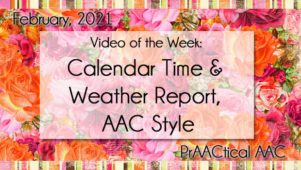
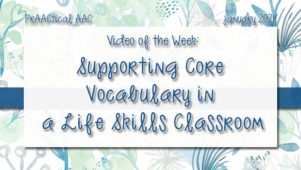
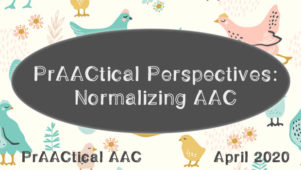
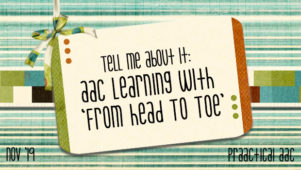
1 Comment
I am hoping that someone can help with the issue of students destroying their personal communication boards. We are constantly making new boards sometimes on a weekly basis. They are constantly bending and or chewing on them. Staff monitor students well, but when given more Independence, the communication boards are targets for this. We laminate with heavy lamination (10 ml) and work on different ways to carry or wear them on a lanyard.